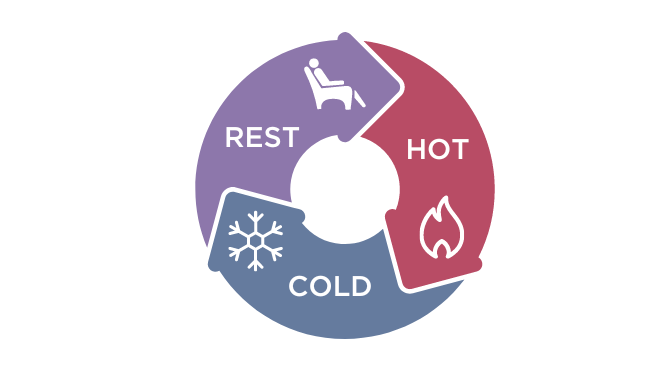
WHAT IS THERMOTHERAPY?
Known for its physical and psychological benefits, thermotherapy was already common practice in the Nordic countries some 2000 years ago. Also known as the thermal cycle, thermotherapy consists of alternating between hot—usually in a sauna—and cold, followed by a period of rest. In essence a “ therapy” that uses temperature variations—”thermo”.
1. Hot (15 to 20 minutes)
2. Cold (10 to 15 seconds)
3. Rest (20 minutes)
Repeating the cycle at least three times will draw maximum benefits.
Physical Benefits of Thermotherapy
- Mimicking the symptoms of fever, the heat of the sauna boosts the immune system by mimicking the symptoms of fever.
- This same heat improves blood circulation, thus lowering blood pressure and ensuring a better heart rate.
- The heat produced by saunas activates the vasodilation of tissues, thus soothing muscle tension and toning the skin.
- Sweating is cleansing and helps release toxins and impurities
- Inhaling steam-containing essence oils helps prevent and treat viral infections.
- Thermal shock promotes slow breathing and improves general respiratory capacity.
- The thermal cycle accelerates recovery.
Psychological Benefits of Thermotherapy
- The thermal cycle releases endorphins known to reduce pain, stress, and anxiety.
- Recent studies conducted in Finland have also shown that repeated and prolonged use of hot baths can reduce the risk of Alzheimer’s and Dementia.

